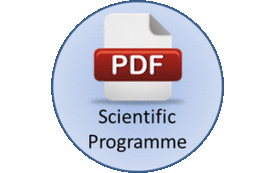
Probir Das
Qatar University, Qatar
Title: A comparative study of biocrude production from two marine microalgae biomass produced in large scale raceway pond
Biography
Biography: Probir Das
Abstract
Harvesting of microalgae biomass is a major obstacle for the low-value microalgal product (e.g., biofuel). Although most of the microalgae remain in the culture suspension, some microalgae exhibit a self-settling phenomenon in the absence of mixing. A self-settling microalga could, therefore, be an ideal candidate for biofuel feedstock. The present study investigated the biocrude oil production potential of two indigenous marine microalgae: Chlorocystis sp. (self-settling), and Picochlorum sp. (non-settling). Both these strains were grown simultaneously in 2 identical 25,000L open raceway ponds in the Qatari desert. Anabaena-type cyanobacteria were spotted in Picochlorum sp. culture on the 6th day and the biomass was harvested on 8th day using a centrifuge. After 10 days of cultivation, Chlorocystis sp. biomass was harvested using sedimentation. Harvested biomass samples were then converted to biocrude oil, using a 500mL Parr reactor. The biocrude yield (AFDW basis) of Picochlorum sp. and Chlorocystis sp. were 39.6 and 34.8% respectively. The energy content of the biocrude oil samples was 32.78 and 33.38MJ/kg for Chlorocystis sp. and Picochlorum sp. respectively. Both the strains were capable of efficiently recycling more than 95% of the HTL aqueous phase (AP) nitrogen when 50% of culture nitrogen was supplied as HTL AP. Although lower biocrude yield was obtained from Chlorocystis sp. biomass, compared to Picochlorum sp., harvesting of Chlorocystis sp. biomass would require much lower energy compared to Picochlorum sp. Therefore, a self-settling marine microalga (e.g., Chlorocystis sp.) could potentially be a better candidate, over non-settling microalgae, for producing biofuel feedstock.

